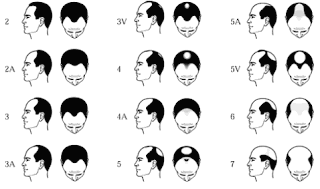What causes tinea capitis and who is at risk?
Tinea capitis (also called ringworm of the scalp) is a skin disorder that usually affects only children younger than age ten. It can be persistent and is highly contagious; it is not due to an infection by a worm. Ringworm gets its name from the appearance of the round lesions that occur on the scalp.
The fungi that cause tinea infections thrive in warm, moist areas. You have an increased risk for tinea infection if you have poor hygiene, prolonged wetness of the skin (such as from sweating), and minor skin or scalp injuries.
Other types of tinea infections that can occur include tinea corporis (on the body), tinea cruris ('jock itch' in the groin area), tinea barbae (beard), tinea unguium (nails), or tinea pedis ('athletes' foot).
Tinea infections are contagious. You can catch the skin disorder if you come into direct contact with someone who has the condition, or if you touch contaminated items such as combs, hats, clothing, or similar surfaces. The infection can enter through cut or broken skin. The infection can also be spread by pets, particularly cats or dogs. Horses, pigs and cows can transmit ringworm, too. Missing patches of hair on an animal may be a sign of ringworm, and the animal should be seen by a veterinarian.
Good general hygiene is important in the prevention and treatment of all tinea infections. The scalp should be shampooed regularly, especially after haircuts.
Avoid contact with infected pets or individuals. Headgear, combs, brushes, and similar items should not be shared. Children sharing sleeping mats at daycare have contracted tinea capitis, as well.
Symptoms
Symptoms of tinea capitis include round, scaly lesions on the scalp. These areas may be red or swollen (inflamed). The patient may also have areas that appear bald (alopecia), due to hair that has broken off. There may be small black dots on the scalp.
Itching of the scalp may be slight, or may not occur at all. Sometimes, there may be pus-filled lesions on the scalp (kerions).
Diagnosis
The diagnosis is suspected primarily based on the appearance of the scalp. A skin lesion biopsy with microscopic examination or culture may show dermatophytes. This test is often not necessary to diagnose tinea capitis. A Wood's lamp test may be performed to confirm the presence of a fungal scalp infection.
Call your doctor if:
Call for an appointment with your health care provider if you have symptoms of tinea capitis. Home care remedies do not effectively treat tinea capitis. Longer-term , prescription oral medications will probably be needed.
Treatment Options
Anti-fungal medications, taken by mouth, are used to treat the infection of the scalp. Agents applied topically, like creams, are not effective, as they do not penetrate to the fungal infection in the hair shaft.
Griseofulvin may be used for 6 to 8 weeks of therapy. Patients should take griseofulvin with a fatty meal to enhance absorption. Griseofulvin may lead to nausea or upset stomach in children.
Terbinafine, itraconazole, and fluconazole are other orally available antifungal options for tinea capitis; however, treatment periods for some of these drugs may be shorter, from 2 to 4 weeks, which may aid in compliance. Both ketoconazole and fluconazole may also cause stomach upset in children.
Many antifungal medications are available generically. Griseofulvin, terbinafine, itraconazole, and fluconazole are all available in the generic form, and because these medications are taken for prolonged periods of time, generic substitutes may be more cost effective.
For tinea capitis caused by Microsporum spp., griseofulvin has been shown to be superior for treatment in a 2013 meta-analysis (Gupta, et al), whereas terbinafine was superior for Trichophyton spp. infection.
In July, 2013 the FDA issued a drug safety communication warning for oral ketoconazole (Nizoral) about the possibility of severe liver injuries, adrenal gland problems and harmful drug interactions with other medications. As a result, ketoconazole oral tablets should not be a first-line treatment for any fungal infection. Oral ketoconazole should be used for the treatment of certain fungal infections, known as endemic mycoses, only when alternative antifungal therapies are not available or tolerated. The topical formulations of ketoconazole have not been associated with liver damage, adrenal problems, or drug interactions. These formulations include creams, shampoos, foams, and gels applied to the skin, unlike the ketoconazole (Nizoral) tablets, which are taken by mouth.
Oral Antifungal Treatments for Tinea Capitis





